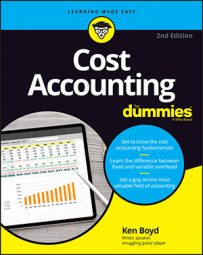In cost accounting, goal congruence is defined as consistency or agreement of individual goals with company goals. Everyone in the organization needs to be rowing in the same direction. That process gets tough when you start to set up evaluation criteria for employees. Your staff members have different jobs with different levels and kinds of responsibility. As you set up goals for everyone, the company-wide goals can get lost.
Your purchasing manager may buy more inventory than you think is necessary. That’s because the manager’s performance criteria are different from the company-wide goals and criteria. The manager and the company’s goals aren’t aligned. This situation is referred to as a lack of goal congruence.
Say preventing stockouts rewards the purchasing manager. The manager avoids stockouts by — you guessed it — buying more inventory than the company really needs. So the manager’s order size is higher than the economic order quantity (EOQ). (The EOQ calculates the ideal quantity of inventory to order for a given product.)
As the old saying goes, “It’s no skin off his nose.” The opportunity cost of tying up more dollars in inventory isn’t posted to the financial statements. The manager buys more than enough inventory, so that he or she avoids a stockout. Bottom line: The purchasing manager gets a good job evaluation (an important goal for him or her) because stockouts never happen.
If the manager buys more inventory than the EOQ, there are impacts at the company-wide level: carrying costs, ordering costs, and opportunity cost.
The carrying cost is higher. If you buy more inventory than needed, you need to store it, insure it, and protect it against theft.
Also, if the purchasing manager panics every time inventory levels decline, he or she may place frequent orders. That activity increases total ordering costs. The whole point of calculating EOQ is to minimize carrying costs and ordering costs. The purchasing manager’s actions don’t allow the company to benefit from using EOQ.
Finally, larger purchases use up more cash. As a result, the opportunity cost is higher. The more you spend on inventory, the less cash you have for other purposes. You pass up other business opportunities. The company is paying more carrying cost and has less cash for other business purposes.
The solution is to evaluate the purchasing manager using multiple criteria. For example, you may want to evaluate the manager on the company’s required rate of return on investment (ROI) as well as the “no stockouts” criterion.
A required rate of return is used to calculate opportunity costs. The extra dollars that the manager is using to buy inventory has a cost. Required rate of return computes a cost for the money used by the purchasing manager.
When you raise money to run your business, investors who provide the funds to you have an expectation about what they will earn on those funds. If the purchasing manager is evaluated on stockouts and required rate of return, he or she has to strike a balance.
The manager wants to avoid stockouts. However, he or she doesn’t want to overspend on inventory. If you explain things to the manager, he or she will probably see the benefit of EOQ and use it. Later, you evaluate the manager using both criteria.

